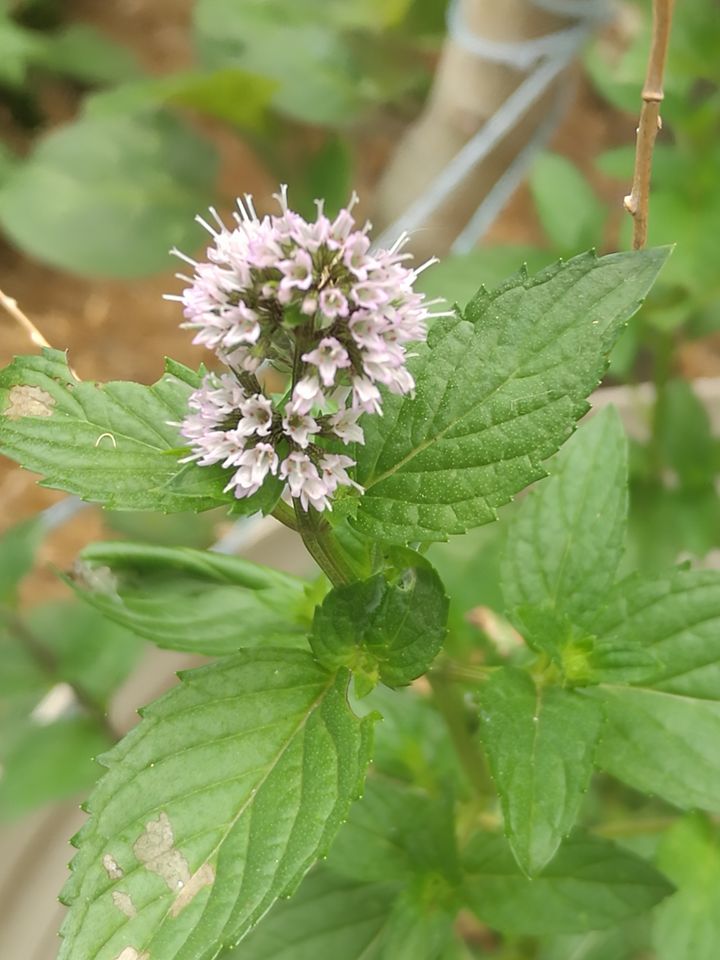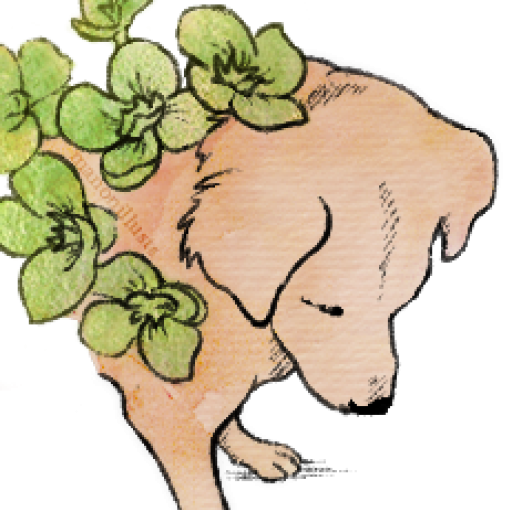
Common names: Peppermint, Lamb Mint, Bo He (generic term for mint in TCM), Udani (generic term for mint in Ayurveda)
Taxonomic name: Mentha x piperita (the x means a hybrid)
Family: Lamiaceae
Related herbs: Spearmint, Catnip, Oregano, Sage, Lemon Balm
Area of origin: Europe and Middle East
Parts used: leaves, volatile oil
Can be used for: bad breath, gum complaints, general respiratory issues, sore throat, cold and flu, hay fever, asthma, poor appetite, bloating, nausea, vomiting, dyspepsia, hiccups, sleep apnea, migraines, insomnia, menstrual cramps, morning sickness, colic, regulates blood sugar and blood pressure, IBS, neuralgia
Organ/System affinities: liver, stomach, respiratory
Healing Actions: diaphoretic, febrifuge, relaxant, sedative, analgesic, expectorant, releases tension antioxidant, amphoteric antispasmodic, cholagogue
Taste: Pepperminty! pungent, sweet
Tissue states: hot, dry, tense
Energetics: cooling (sometimes listed as having a locally warming effect), moves heat to the exterior, calms the spirit
Healing constituents: Menthol, bitters, resins, volatile oil (Menthone), Vitamins (A & C), Minerals (Iron, Potassium, Calcium, Magnesium and Manganese), terpense (1,8-cineole and limonene)
Warnings: Peppermint is highly medicinal and very potent. Some folks may find the essential oil irritating. Peppermint can be irritating to people who have esophageal issues such as gastroesophageal reflux disease, reflux and heartburn. Caution too when pregnant because Peppermint can relax the smooth muscles of the uterus.
Description
Peppermint is a hybrid between Spearmint and Watermint. It has the classic spreading, ground hugging form of most Mints and shares their branching, squarish stem. It has round to lanceolate , opposite leaves that distinguish it from Spearmint (which has lanceolate or spear shaped leaves). The leaves of Spearmint are a lot more crinkly looking). Flowers are purple/lilac and grow in clusters at the end of a terminal spike. The flowers have the lipped form of other members of the Lamiaceae family. If in doubt about the identity of your Mint, crush a leaf or two and smell that delicious Peppermint aroma.


Medicinal uses
Most of the Mints can be used interchangeably but Peppermint tends to be better for digestive issues.
Being one of the large and generally medicinal Mint family (Lamiaceae), Peppermint contains a potent volatile oil or two. Peppermint was the original source of menthol, that nose clearing and stomach settling compound. The plant is around 40% menthol.
Peppermint shines where its volatile oil and other aromatic compounds can directly touch tissues. That’s why it is so good at helping mouth problems. Once those constituents hit the mouth, the antimicrobial and antiseptic properties of Peppermint start to kill off nasties and can even slightly numb the affected area.
Peppermint can be irritating to people who have esophageal issues such as gastroesophageal reflux disease, although I find it generally soothing for my everyday reflux. For issues further down the digestive tract, Peppermint has an anaesthetizing effect on the mucous membranes of the gut and can relax muscles all along the digestive tract. Those two actions explain how Peppermint can relieve nausea, reduce vomiting and alleviate colic and wind. If you factor in its antibacterial compounds, Peppermint should be one of the herbs of choice for gastrointestinal infections.
The same applies for upper respiratory issues such as the early stages of cold and flu. Once those aromatics contact the mucus membranes, they relax and get a little numb and the antimicrobial constituents of Peppermint go to work. The menthol helps clear out congestion very effectively along with the other compounds, making Peppermint an excellent choice for colds, flu and hayfever.
Peppermint’s expelling nature helps it to bring on cases of measles and other spotted fevers that may not have broken and become obvious yet. Washing with an cooled infusion can bring relief from the itchiness of psoriasis, herpes, scabies or eczema and other inflammatory skin conditions.
Peppermint relaxes smooth muscles throughout the body and is quite effective on those in the uterus, and can be chosen as a way to relieve period pain and cramping. For pregnant women, this can be an issue as can the herb’s ability to dry up milk supply when a woman is lactating.
In the energetics section earlier in this post, I mentioned that Peppermint is generally considered cooling but is sometimes considered heating. Lucy Jones points out that the herb raises the internal temperature of the body (warming) and encourages sweating (cooling).
It’s a good herb for headaches, particularly migraines, as Peppermint relaxes the smooth muscles of blood vessels too, easing the flow of blood throughout, especially where locally applied. Applying an oil or even tincture to the temples and forehead and even the nape of the neck can relieve some migraines pretty quickly.

Peppermint is used as a substitute for coffee by people wanting to break their addiction to that (wonderful) brew. John Lust says that in large quantities, quantities, Peppermint is an aphrodisiac.
Preparing and using Peppermint
All of the Peppermint plant can be used to make remedies from but the leaves are by far the most potent parts. Be cautious though for, as Lucy Jones points out that Peppermint is ‘significantly medicinal and shouldn’t be underestimated’.
By far the best way to use Peppermint is as a strong, hot tea. It can be prepared as an infusion too but gently warm this before using. Whichever way you prepare your Peppermint, keep a lid on your vessel top help prevent those amazing volatile oils from escaping.
Peppermint can lift your mood and calm your spirits simply by inhaling the scent of crushed, fresh leaves. Fresh leaves can be chewed to help relieve others of any case of bad breath that you can have. Its antimicrobial constituents help kill off the bacteria that could be causing it and the menthol covers it with a nice minty smell. In the same way, leaves can be chewed to help with gum infections and if held against a sore spot, Peppermint can relieve the pain of a toothache temporarily by pressing a wad of chewed leaves against the affected area.
John Lust recommends a few drops of oil on a sugar cube for internal use.
Peppermint makes a great hydrosol and its essential oil is a go to remedy for many folks with digestive issues and Crohn’s disease. Enteric coated capsules of Peppermint are available to treat some digestive issues by allowing the herb to arrive in the intestines undigested by the stomach.
Peppermint tincture has a taste that is out of this world if prepared with a high concentration of alcohol (>80%). It only takes a few drops to work its medicinal magic, so don’t take too much at a time.
Add menthol to your liniments to help them penetrate better. You can buy the crystals cheaply online but be sure to only use a little, it really packs a punch.
Other herb pages on Ligaya Garden
We cover a lot of ground on many herb related topics here on our website. There are whole pages devoted to different topics as well as frequent posts. Some of the links are –

